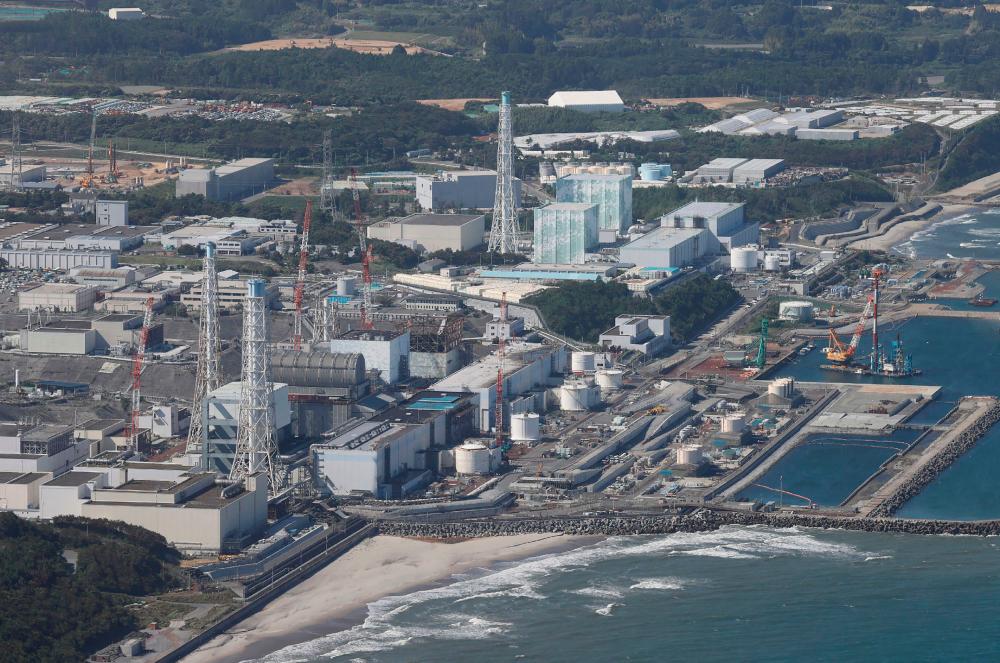TOKYO: Japan on Wednesday started its fourth round of release of nuclear-contaminated wastewater from the crippled Fukushima Daiichi Nuclear Power Plant into the Pacific Ocean, despite opposition from local fishermen and residents, as well as backlash from the international community, reported Xinhua.
As Tokyo Electric Power Company (TEPCO), the plant’s operator, started discharging the radioactive wastewater at around 11.11 am local time, opposers deemed such intentional spreading of radioactive substances unacceptable for a long-term environmental impact.
Similar to the previous three rounds, about 7,800 tonnes of wastewater, which still contains tritium, a radioactive substance, will be discharged over 17 days.
For the fourth round onwards, TEPCO said it will skip the step of temporarily storing treated water in large tanks to confirm tritium concentration before release, adding that samples of diluted treated water will be collected during the discharge operation instead, and its concentration will be measured once daily.
Wednesday’s release marked the final discharge for the fiscal year 2023 ending in March, bringing the total amount for the fiscal period to approximately 31,200 tonnes of the wastewater stored in tanks at the nuclear plant in the northeastern Japanese prefecture.
For the fiscal year of 2024 starting from April, TEPCO in January announced its plan to release around 54,600 tonnes of nuclear-contaminated water from the facility into the ocean in seven rounds, which contains about 140 trillion becquerels of radioactive tritium.
Japanese fishermen have long opposed the discharge, while distrust and anger towards the government and Tokyo Electric Power Company have been mounting among the public.
Chiyo Oda, a resident of Fukushima’s Iwaki City, stated that “the intentional spread of radioactive substances” in the ocean discharge of nuclear-contaminated water is “unacceptable”, adding that the recent powerful 7.6-magnitude earthquake that struck the Noto Peninsula has raised concerns about the safety of nuclear power plants.
“As someone who lived through the Fukushima nuclear disaster, I believe that people should no longer have to go through radiation hazards,“ she said.
Also starting on Wednesday, TEPCO will attempt to investigate the containment vessel of No. 1 reactor using drones and robots to discuss methods for removing melted nuclear debris.
Considered the biggest challenge in the decommissioning of the Fukushima plant, the extraction of nuclear fuel debris from the containment vessels of No. 1 to No. 3 reactors has yet to begin nearly 13 years after the accident, with no end in sight for the discharge of nuclear-contaminated wastewater.
Questioning the so-called justification for ocean discharge, Oda stated that TEPCO started discharging nuclear-contaminated wastewater with clear knowledge that the reactor decommissioning could not be completed within 30 years.
TEPCO started the ocean discharge by claiming it was indispensable for the decommissioning of the reactors, but said the decommissioning was not going well after the discharge started, it is cheating, she said.
TEPCO in January again postponed the start of melted nuclear fuel debris removal from the Fukushima power plant, marking the third postponement of the trial debris removal, which is considered a big challenge in decommissioning the plant.
“The ocean discharge should be stopped immediately as the whole decommissioning process is ambiguous,“ said Masahide Kimura, a Japanese civic group member.
“There is no clear path forward, and now, it seems increasingly uncertain when the discharge will end. It could last for 50 years or even hundreds of years, with worrying impacts on the environment,“ Toshihiro Inoue from a Japanese citizen group against atomic and hydrogen bombs told Xinhua over phone, who found it “unreasonable” for the government and TEPCO to treat the discharge as “fait accompli”.
Kimura noted that TEPCO’s irresponsible handling of nuclear-contaminated wastewater has triggered distrust, citing recent accidents in the crippled plant.
In Indonesia, a group of plaintiffs filed a lawsuit against Japan at the Central Jakarta District Court last Thursday, demanding an end to the release of the wastewater.
Marthin Hadiwinata, a member of the local environmental organisation Ekomarin and one of the plaintiffs, said the release “will directly impact Indonesia’s ecosystem”, Japan’s national news agency Kyodo reported.
Hit by a 9.0-magnitude earthquake and an ensuing tsunami on March 11, 2011, the Fukushima nuclear plant suffered core meltdowns that released radiation, resulting in a level-7 nuclear accident, the highest on the International Nuclear and Radiological Event Scale.
The plant has been generating a massive amount of water tainted with radioactive substances from cooling down the nuclear fuel in the reactor buildings, which is now stored in tanks at the nuclear plant.
In August 2023, Japan started to discharge the wastewater into the Pacific Ocean, despite repeated objections by governments and communities, environmental groups, non-governmental organisations, and anti-nuclear movements in Japan and the Pacific region. -Bernama









